#New Britain Museum of American Art
Explore tagged Tumblr posts
Text
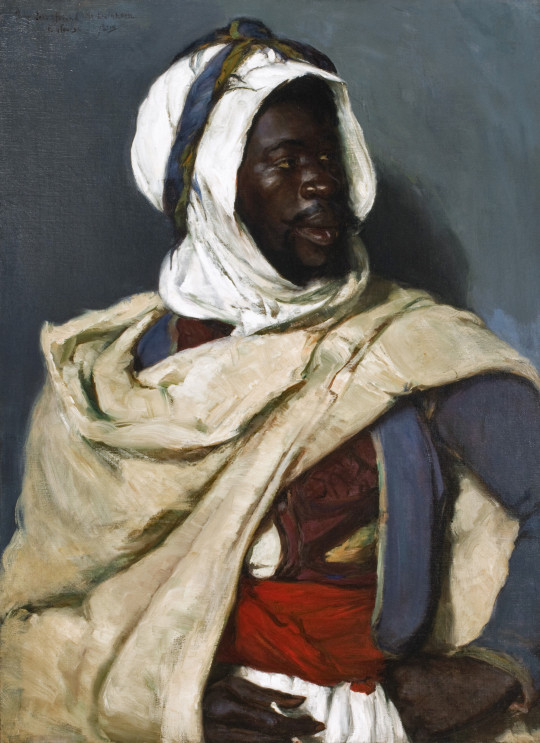
Moorish Prince (aka Head of an Algerian), Elizabeth Nourse, 1897
#art#art history#Elizabeth Nourse#female artists#portrait#portrait painting#poc in art#Orientalism#Orientalist art#American art#19th century art#oil on canvas#New Britain Museum of American Art
325 notes
·
View notes
Text
Fashion & Art Museum
Website : https://www.greenfad.shop/
Address : Stamford, Connecticut, USA
Green Fashion, Art & Design Museum (Green F.A.D) is a Pop Up Museum transforming multicultural art mediums into fashion and design for all to enjoy.
Our collections and projects at Green Fashion, Art & Design Museum|Green F.A.D. are unique. You are cordially invited to explore our social media platforms, where you will have a chance to expand your knowledge and explore sustainable conscious collection. You’ll be exposed to new ideas, places and people.
Facebook : https://www.facebook.com/greenfad
Instagram : https://www.instagram.com/greenfadmuseum/
Keywords: fashion museum fashion museums near me fashion museum near me fashion and textile museum stamford art museum art museums connecticut art museums in connecticut connecticut art museums art museum connecticut connecticut art museum green museum design green bay packers museum design museum of american art new britain connecticut new britain museum of american art new britain connecticut art museum in connecticut british art museum new haven connecticut palestinian art museum connecticut aldrich contemporary art museum connecticut aldrich contemporary art museum in ridgefield connecticut aldrich contemporary art museum ridgefield connecticut american art museum connecticut art and humaity museums in connecticut art museum hartford connecticut art museum in hartford connecticut art museum in old lyme connecticut art museums near mystic connecticut art museums on the connecticut passport trail art music & museums in connecticut best art museums in connecticut connecticut 2018 art museum exhabits connecticut art museums galleries connecticut college art museum connecticut harbor paintings at museum of fine arts connecticut museum of art british connecticut museum of contemporary art connecticut museum of modern art connecticut studio art museums connecticut's wadsworth atheneum museum of art contemporary art museum connecticut contemporary art museum in connecticut contemporary art museums connecticut contemporary museum of art connecticut i'm an allen art museum new london connecticut i'm an allyn art museum new london connecticut lyman allyn art museum connecticut college modern art museum connecticut museum of art connecticut museum of cartoon art connecticut museums in connecticut and art new britain art museum connecticut new britain connecticut art museum new britain connecticut museum of art new britain museum of american art connecticut in december new britain museum of american art in connecticut new britain museum of american art new britain connecticut usa new britain museum of art new britain connecticut restaurants in new haven connecticut near the yale art museum southern connecticut art museum the aldrich contemporary art museum ridgefield connecticut top 10 art museums in connecticut which connecticut museum is devoted to only contemporary art yale art museum connecticut prints yale art museum new haven connecticut stamford museum observatory design art museum stamford art museum stamford ct art museums in stamford art museums in stamford ct stamford art museum ct stamford ct art museum stamford museum of art tom green art museum bowling green art museum sustainable fashion museum pop up museum fa la land holiday pop up museum interactive pop up museum connecticut museum of art museum of fine arts connecticut museum of contemporary art connecticut hartford connecticut museum of art the museum of art new england museum of art metropolitan museum of art ct free museums
#fashion museum#fashion museums near me#fashion museum near me#fashion and textile museum#stamford art museum#art museums connecticut#art museums in connecticut#connecticut art museums#art museum connecticut#connecticut art museum#green museum design#green bay packers museum design#museum of american art new britain connecticut#new britain museum of american art new britain connecticut#art museum in connecticut#british art museum new haven connecticut#palestinian art museum connecticut#aldrich contemporary art museum connecticut#aldrich contemporary art museum in ridgefield connecticut#aldrich contemporary art museum ridgefield connecticut
1 note
·
View note
Text
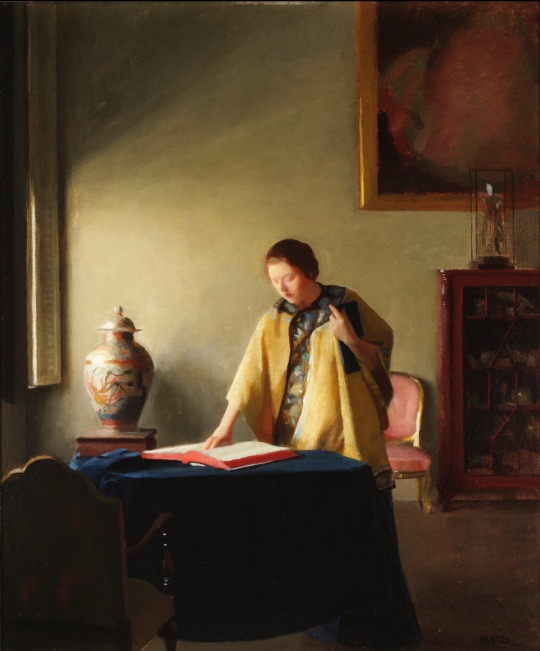
William McGregor Paxton (American, 1869–1941) • Woman with a Book • c. 1910 • New Britain Museum of American Art, New Britain, Connecticut, U.S.
#art#fine art#painting#art history#oil painting#william mcgregor paxton#american artist#early 20th century american art#paintings of interiors#paintings of domestic interiors#interior with figure#art appreciation#artwork#the painted room art blog
48 notes
·
View notes
Text

John Haberle (American, 1853-1933) ~ Time and Eternity ~ c. 1889-90 ~ New Britain Museum of American Art. New Britain, Connecticut, U.S.
Photo credit: Pagan Sphinx Photography
#art#painting#fine art#still life#art history#trompe l'oeil#art of the still life blog#oil painting#john haberle#american artist#late 19th century american art#pagan sphinx photography#art blogs on tumblr#art lovers on tumblr
30 notes
·
View notes
Photo
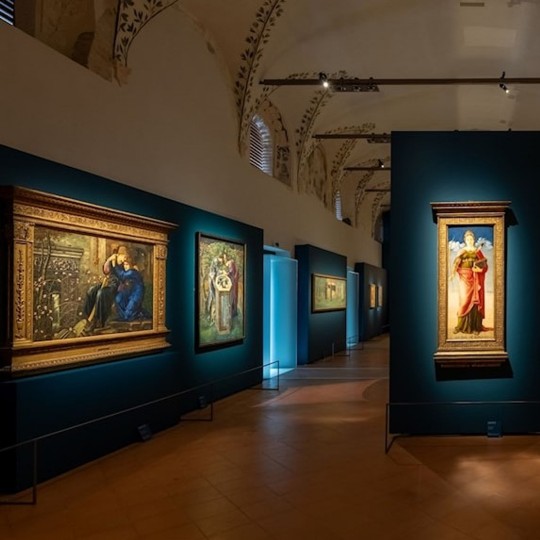
Interview: Pre-Raphaelites: Modern Renaissance
Pre-Raphaelites: Modern Renaissance marks the first multidisciplinary exhibition in Italy to examine the profound impact of Italian Renaissance art on the Pre-Raphaelite movement, which flourished in Victorian and Edwardian Britain (c. 1840-1920).
Displayed throughout the hallowed halls of the San Domenico Museum, a restored 13th-century Dominican convent in Forlì, Italy, are over 300 works of art, which juxtapose and highlight the revolutionary creativity and intensity of two important artistic eras. In this exclusive interview, James Blake Wiener speaks to Mr. Peter Trippi, a co-curator of the exhibition and an expert of Victorian art, about the exhibition.
JBW: Peter, thanks so much for speaking to me and introducing us to a most gorgeous exhibition.
I have always seen the Pre-Raphaelite artists as rebels and innovators. Their rejection of Victorian complacency and industrial materialism, as reflected in their works, shocked segments of the British public. Looking to the distant past to find a more natural vision, Pre-Raphaelite artists embraced that which was ordinary while still applying innovation to technique and treatment of form in novel ways.
What was it that made the revolt of the Pre-Raphaelite Brotherhood so enduring and yet so profound in its immediate impact?
PT: The earliest paintings exhibited by members of the Pre-Raphaelite Brotherhood electrified their contemporaries in the late 1840s and early 1850s for several reasons. Visually, they were completely out of step with everything around them at London's crowded major exhibitions: their brilliant coloring stood out from the drab browns and greys used by most artists at the time; their draftsmanship and paint handling was precise rather than "sloshy" (the term they used to criticize their older colleagues); their compositions were willfully naïve and sometimes even jarring, ignoring the polite post-Raphaelite conventions that the Royal Academy promoted; and they were depicting narratives that were unexpectedly high-minded (such as the Annunciation to the Virgin Mary) or gruesomely passionate (such as the run-up and aftermath of Lorenzo's murder in John Keats's Romantic poem Isabella and the Pot of Basil). Viewers could see these were young men with talent and something fresh to say, but they were not quite sure what to do with it. It was not until 1851, when the prestigious critic John Ruskin came to their defense, that the British public began to accept these innovations.
The continuing power of those innovations was demonstrated in 1986 when I was sitting in an art history lecture hall at the University of St. Andrews in Scotland. As an American exchange student, I had never even heard of the Pre-Raphaelites (who were little known in the U.S. then). But I sat up straight in my chair as their brilliantly colored, oddly composed, and often erotic images came up on the screen. 175 years after its launch, the Pre-Raphaelite Brotherhood's power to fascinate is still evident. Once they start, people cannot stop looking.
JBW: Highlights on display within the exhibition include celebrated paintings and drawings by the great Italian masters, including Botticelli, Lippi, Verrocchio, Michelangelo, Veronese, Titian, and even Guido Reni. These are juxtaposed with major works by British artists including Dante Gabriel Rossetti, John Everett Millais, William Holman Hunt, John Ruskin, and J. W. Waterhouse, among others. The pairing of Renaissance Italian antecedents with Pre-Raphaelite masterpieces affords visitors a rare opportunity to compare and contrast across time and space.
What new perspectives can the visitor learn with regard to Pre-Raphaelites as a result of this exciting pairing?
PT: The exhibition at Forlí has a light touch; it is almost poetic in the way it allows the Italian Old Masters and their British admirers to converse with each other in the same rooms, without striving to show direct influences or replications. A great example is the large room of Dante Gabriel Rossetti's mature paintings, most of which show women in bust-length portrait formats, as if sitting at a window. These images (of such sitters as Jane Morris and Fanny Cornforth) have become famous around the world, but never before have we seen them hanging side by side, literally interspersed, with the Madonnas, Florentine noblewomen, and Venetian courtesans to which Rossetti was responding. It is only in an art-rich country like Italy that a museum can make this case so visibly. In the UK, for example, there simply are not enough of the Italian prototypes available to lend them to a show about 19th-century British art. My co-curator Liz Prettejohn and I knew that this opportunity might never come again and so we pounced on it. Once visitors leave that Rossetti room, they will never see his famous woman-at-the-window the same way; suddenly her backstory has become clear.
JBW: Aside from paintings and drawings, sculptures, prints and photographs, to furniture, ceramics, glass, metalwork, tapestries, wallpaper, illustrated books, and jewelry are also displayed within Pre-Raphaelites: Modern Renaissance.
Many Pre-Raphaelites artists believed that the way art was produced could shape wider cultural values. Is this reflected within the exhibition, and if so, how?
PT: Our curatorial team was eager to show how the Pre-Raphaelites' innovative ideas about the power and romance of Italian Renaissance art were transmitted not only through "fine art" (paintings, sculptures, drawings, and prints) but also through the applied (decorative) arts. We invited Dr. Charlotte Gere, the London-based scholar of decorative arts, to join the team, and she selected most of those artworks, primarily from the Victoria and Albert Museum, Fitzwilliam Museum, and British Museum, but also from other UK collections. One of her aims was to show that the "second generation" of Pre-Raphaelites – especially Edward Burne-Jones and William Morris – were determined to bring their aesthetic into immersive environments ranging from churches to the dining rooms at the Victoria and Albert Museum. They also made objects in every possible medium that individuals could buy and live with, often on the expensive side, but not always. By 1870, their worldview had morphed into the Aesthetic Movement (the so-called Cult of Beauty), which impacted every aspect of visual culture in the UK and, by extension, its empire and the United States. The most dramatic examples of immersive decoration in our show are the huge Holy Grail tapestries designed in the 1890s by Edward Burne-Jones and hand-woven by William Morris's team for a wealthy collector's baronial hall near London.
JBW: Pre-Raphaelites: Modern Renaissance additionally explores the important and often overlooked contributions made by accomplished female artists to the Pre-Raphaelite movement.
What can you tell us about these Victorian talents, and how are they differentiated from their male colleagues within the show?
PT: We are pleased to have 15 women artists represented in our exhibition through 26 different works. In order of appearance, they are Elizabeth Siddal, Christina Rossetti, Maria Rossetti, Eliza Jameson Strutt, Evelyn De Morgan, Christiana Jane Herringham, Constance Phillott, Maria Cassavetti Zambaco, Marie Spartali Stillman, Julia Margaret Cameron, Beatrice Parsons, Marianne Stokes, Phoebe Anna Traquair, Eleanor Fortescue-Brickdale, and May Cooksey. Over the past quarter-century, scholars have proven that women were fully involved in the Pre-Raphaelite movement as it evolved over time, but usually, their stories have been ignored or even erased by subsequent generations. That injustice is certainly not unique to art history, but it is time to rectify it, and we were delighted that so many relevant loans were approved.
Some of these women have been thoroughly studied (such as Dante Gabriel Rossetti's wife and collaborator, Elizabeth Siddal) while others still need to be investigated (such as the enigmatic May Cooksey). We have scattered them throughout the show rather than placing them in a female "ghetto," and we are especially proud to have six major examples of mature work by Evelyn De Morgan. Her parents wanted her to marry a rich man and start a family, but with the help of her artist-uncle J. R. Spencer Stanhope (also in our show), she pursued formal artistic training and ultimately exhibited her large symbolist canvases at London's prestigious Grosvenor Gallery right alongside starry male colleagues like Edward Burne-Jones. I would argue that she surpassed her uncle in quality and ambition.
JBW: I was intrigued to learn that over time, the Pre-Raphaelites and their admirers shifted their attention to other periods in Italian art, including 16th-century Venetian art.
Could you tell us more about this transfer in focus, and how that is revealed within the exhibition?
PT: Because the period we are studying is so long (1840s through 1920s), it is inevitable that the British artists would shift in their predilections for Italian art. In the beginning, the Pre-Raphaelite Brothers had little original Italian art to study in person in London, so they consulted prints and illustrated books. One of their heroes was Fra Angelico, not only for his seemingly naïve compositions and handling (naïve as compared with Raphael) but also because he was a monk – a man of faith who expressed his devotion through art, something the Brothers felt was lacking in British art of the 1840s. Our co-curator Cristina Acidini (former head of the Museums of Florence) selected a superb Angelico, which is now displayed at one end of the huge church that serves as our exhibition's first gallery. At the other end, she has placed Botticelli's famous Pallas and the Centaur so that they face each other. This is a brilliant and quite poetic juxtaposition; back in 1848, when the Brotherhood launched, no one was talking about Botticelli at all. By the 1870s – thanks in large measure to British scholars and collectors getting interested in him – Botticelli was all the rage and was particularly influential on Edward Burne-Jones, whose Holy Grail tapestries are shown just beyond Pallas and the Centaur.
We have many moments of transition like this throughout the show. The gallery devoted to Frederic Leighton is a key example, with its insertion of Lotto, Veronese, and Reni – a disparate trio of heroes! Again, such a loan list could only happen in an art-rich country like Italy. No British or American museum could deliver these prototypes in such quantity or quality.
JBW: One can say that the convent, itself, is another star of the show.
How was it chosen as the venue for Pre-Raphaelites: Modern Renaissance, and why is it the perfect venue to showcase Pre-Raphaelite and Renaissance masterpieces?
PT: It was only in 2021 that director Dr. Gianfranco Brunelli conceived this theme as a logical extension of the series of superb loan exhibitions he has been mounting at the Museo San Domenico. (Most of them have focused on Italian and Continental art, including specific masters and themes such as Mary Magdalene. This is the first one to encompass British art.) He brought in Cristina Acidini (see above) and Francesco Parisi (an independent scholar based in Rome) and then Liz Prettejohn and me. In 2022, we began requesting loans from museums and individuals around the world, and by February 2024, we were opening the show! That is a comparatively quick development process, and I think one reason it worked so well is that many lenders were intrigued by the idea of their British-made, Italian-inspired artworks being shown in Italy to modern Italian audiences.
This theme has previously been tackled in a few exhibitions (e.g., London, San Francisco), but with only a few Renaissance prototypes on view – never so many as we have now. Moreover, the fact that the Museo San Domenico is a renovated medieval monastery adds visual power and meaning to the visitor experience; this is especially notable in the former refectory now devoted to Edward Burne-Jones. In many of his paintings we see scrolling foliage that he borrowed from Renaissance art, and painted on the ceiling above in the Middle Ages are those same scrolling forms. The outer walls are lined with Burne-Jones's art, while the middle of the room features major prototypes by such forerunners as Bellini, Mantegna, and Michelangelo.
JBW: Many readers may agree with me that the Pre-Raphaelite artists remain so compelling because of the exuberance, naturalism, and luminosity found in their works. The Pre-Raphaelites' love affair with the art of the Italian Renaissance allowed them to drive innovation within artistic creation.
What then is the legacy of the Pre-Raphaelites? Moreover, why do you believe visitors come to see this exhibition?
PT: I think that many museums today underestimate the ability of visitors to connect the visual dots for themselves. We are often "spoon-fed" curatorial arguments because our own grasp of art history is slim, and that is OK because it is better to do this than appear exclusive or intimidating. In Italy, however, all young children in public and private elementary schools are taught art history and studio art (and this continues right through high school). And, of course, they are literally surrounded by Italian Renaissance art, which they see not only inside churches and museums but also in public spaces such as piazzas. This means that the visitors in Forlí (95% of whom are Italian) are already familiar with the Italian Renaissance art on view, and therefore eager to learn about the British artists who revered it and adapted it to their own ends.
The response we are getting (through the Italian media and conversations occurring inside the exhibition galleries) is one of surprise (e.g., "How did we not know about these terrific British artists before?") and also of mutual respect: this show is about a profound love and admiration that British artists felt for Italy, and in the final room we even show examples of how late 19th-century Italian artists integrated British approaches into their own work.
We hope that all our visitors will choose to learn more (perhaps by visiting major collections of Pre-Raphaelite art at venues like Tate Britain and the Birmingham Museum & Art Gallery), and ultimately see how imagery and ideas travel across eras and places that are seemingly disparate. Artists play a special role in society by transcending superficial boundaries and looking – really looking – at their colleagues' creations with respect and insight.
Art made by Italians at the end of the nineteenth century
JBW: Peter, on behalf of World History Encyclopedia, I thank you so much for sharing your knowledge with us! I thank you so much for your time, consideration, and expertise. PT: Thank you for taking the time to ask these important questions!
Pre-Raphaelites: Modern Renaissance remains on display, at the San Domenico Museum Piazza Guido da Montefeltro, in Forlì, Italy, until June 30, 2024.
Peter Trippi is editor-in-chief of Fine Art Connoisseur, the national magazine that serves collectors of contemporary and historical realist art, and president of Projects in 19th-Century Art, a firm he established to pursue research, writing, and curating opportunities. Based in New York City, Peter recently completed a six-year term as president of the Foundation for Advancement in Conservation, which supports and raises awareness of the American Institute for Conservation, the country's leading society of conservation and preservation professionals. Peter previously directed the Dahesh Museum of Art (New York City), headed development teams at the Brooklyn Museum and Baltimore Museum of Art, and has created (with Prof. Liz Prettejohn, University of York) international touring exhibitions and publications devoted to the 19th-century British painters J.W. Waterhouse and Lawrence Alma-Tadema. Their latest curatorial project, the exhibition Pre-Raphaelites: Modern Renaissance, is on view in Forlí (near Bologna, Italy) through June 30. It is accompanied by a 600-page catalogue in Italian.
Continue reading...
27 notes
·
View notes
Text

May Fung Yee Pang (龐鳳儀, 庞凤仪) (born October 24, 1950) is an American former music executive. She worked for John Lennon and Yoko Ono as a personal assistant and production coordinator. When Lennon and Ono separated in 1973, Pang and Lennon began a relationship that lasted more than 18 months. Lennon later referred to this time as his “Lost Weekend���.

Early Years and Education
Pang was born in Manhattan. She is the daughter of Chinese immigrants and grew up in the Spanish Harlem section of New York City with an elder sister and an adopted brother, both of whom were born in China. Pang’s mother owned and operated a laundry business in the area. The Pang family left Spanish Harlem when the tenements where they lived were scheduled to be razed, moving to an apartment near 97th Street and 3rd Avenue in Manhattan.
After graduating from Saint Michael Academy, Pang attended New York City Community College. She aspired to be a model, but modelling agencies reportedly told her she was too “ethnic”.
Pang’s early jobs included being a song-plugger, which meant encouraging artists to record songs written by songwriters. In 1970, she began work in New York as a receptionist at ABKCO Records, Allen Klein’s management office, which at that time represented Apple Records and three former Beatles: Lennon, George Harrison, and Ringo Starr.

Relationship with John Lennon and Yoko Ono
Pang was asked to help Lennon and Ono with their avant-garde film projects, Up Your Legs Forever and Fly, in December 1970.
Pang was then asked to be Lennon and Ono’s secretary and factotum (domestic worker) and gofer (employee who specializes in the delivery of special items to their superior(s)) in New York City and Britain, which led to a permanent position as their personal assistant when the Lennons moved from London to Manhattan in 1971.
Pang coordinated an art exhibition in Syracuse, New York, on October 9, 1971, for Ono’s This Is Not Here art show at the Everson Museum. Ono’s show coincided with Lennon’s 31st birthday, and a party was held at the Hotel Syracuse, which was attended by Ringo Starr, Phil Spector, and Elliot Mintz.

“Lost Weekend”
In mid-1973, Pang was working on the recording of Lennon’s Mind Games album. Lennon and Ono were having marital problems, and Ono suggested to Pang that she become Lennon’s companion. Ono explained that she and Lennon were not getting along, they had been arguing and were growing apart, and that Lennon would start seeing other women. She pointed out that Lennon had said he found Pang sexually attractive. Pang replied that she could never start a relationship with Lennon as he was her employer and married. Ono ignored Pang’s protests and said that she would arrange everything. Ono later confirmed this conversation in an interview.
In October 1973, Lennon and Pang left New York for Los Angeles to promote Mind Games, and decided to stay for a while, living at lawyer Harold Seider’s apartment for a couple of days and then Lou Adler’s house. While there, Lennon was inspired to embark on two recording projects: to make an album of the old rock ‘n’ roll songs that inspired him to become a musician, and to produce another artist. In December 1973, Lennon collaborated with Phil Spector to record the oldies album Rock ‘n’ Roll. Lennon’s drinking and Spector’s erratic behavior (which included his firing a gun in the studio control room) caused the sessions to break down. Then Spector, who claimed to have been in a car accident, took the session tapes and became unreachable.
In March 1974, Lennon began producing Harry Nilsson’s Pussy Cats album, thus named to counter the “bad boy” image the pair had earned in the media with two drinking incidents at the Troubadour. The first was when Lennon placed a Kotex on his forehead and scuffled with a waitress at a concert given by Ann Peebles, who had released “I Can’t Stand the Rain”, one of Lennon’s current favorite records; and the second, two weeks later when Lennon and Nilsson were ejected from the same club after heckling the Smothers Brothers. Lennon thought it would be a good idea for the musicians to live under one roof to ensure they would get to the studio on time, so Pang rented a beach house in Santa Monica for her, Lennon, Nilsson, Ringo Starr and Keith Moon to live. At this time, Pang encouraged Lennon to reach out to family and friends. He and Paul McCartney mended fences and played together for the first and only time after the breakup of the Beatles. Pang also arranged for Julian Lennon to visit his father for the first time in almost four years.
Julian began to see his father more regularly. Lennon bought Julian a Gibson Les Paul copy guitar and a drum machine for Christmas in 1973, and encouraged Julian’s interest in music by showing him some chords. “Dad and I got on a great deal better then,” recalls Julian. “We had a lot of fun, laughed a lot and had a great time in general when he was with May Pang. My memories of that time with Dad and May are very clear—they were the happiest time I can remember with them” The cover of Julian’s seventh album, Jude, features a childhood photo of him taken by Pang.
In June 1974, Lennon and Pang returned to live in Manhattan. Lennon stopped drinking and concentrated on recording. Lennon previously had cats while he lived at his Aunt Mimi’s house in Liverpool; he and Pang adopted two cats that they named Major and Minor.
In the early summer, Lennon was working on his Walls and Bridges album when the couple moved into a penthouse apartment at 434 East 52nd Street. On August 23, Lennon and Pang claimed to have seen a UFO from their terrace, which had a panoramic view of Queens. To gain access to the deck, Lennon and Pang had to climb out of their kitchen window. On the night in question, a naked Lennon excitedly called Pang to join him on the deck outside and they both watched a circular object silently floating less than 100 feet away. Lennon called Bob Gruen—Lennon’s “official” photographer—and told him what had happened. Gruen suggested Lennon should call the police, but Lennon laughed it off, saying, “I’m not going to call up the newspaper and say ‘This is John Lennon and I saw a flying saucer last night.’” Gruen called the local police precinct which confirmed that three other people had reported a sighting, and the Daily News wrote that five people had reported a sighting in the same area of New York where Lennon and Pang lived. Lennon references the incident in the song ��Nobody Told Me”.
Walls and Bridges rose to the top spot on the album charts. Lennon achieved his only number-one solo US single in his lifetime with “Whatever Gets You thru the Night”. Pang’s is the voice whispering Lennon’s name on “#9 Dream”. “Surprise, Surprise (Sweet Bird of Paradox)” was written about her. Julian played drums on the album’s last track, “Ya Ya”. While recording Walls and Bridges, Al Coury, vice president of promotion for Capitol Records, got possession of the chaotic Spector session tapes and brought them to New York. Lennon completed his oldies album, which was titled Rock 'n’ Roll, with the same musicians he used on Walls and Bridges. Pang received an RIAA gold record award for her work on Walls and Bridges and continued her work as production coordinator of Lennon’s Rock 'n’ Roll album, where she was credited as “Mother Superior”. Pang also worked on albums by Nilsson, Starr, Elton John and David Bowie.
While visiting Mick Jagger at Andy Warhol’s compound in Montauk, New York, Lennon and Pang saw a Scottish-style cottage for sale close to the Montauk Point Lighthouse. Lennon asked a real estate broker to put in an offer for it in February 1975.
In the same month, Lennon and Pang were also planning on visiting Paul and Linda McCartney in New Orleans, where their band Wings were recording the Venus and Mars album, but Lennon reconciled with Ono the day before the planned visit, after Ono said she had a new cure for Lennon’s smoking habit. After the meeting, he failed to return home or call Pang. When Pang telephoned the next day, Ono told her that Lennon was unavailable because he was exhausted after a hypnotherapy session. Two days later, Lennon reappeared at a joint dental appointment; he was stupefied and confused to such an extent that Pang believed he had been brainwashed. Lennon told Pang he had reconciled with Ono and their relationship was over. Over the coming years, Pang quietly met Lennon a few times but their relationship was never rekindled.
Lennon lamented this period publicly but not in private. Journalist Larry Kane, who befriended Lennon in 1964, wrote a comprehensive biography of Lennon which detailed the “Lost Weekend” period. In the interview with Kane, Lennon explained his feelings about his time with Pang; “You know Larry, I may have been the happiest I’ve ever been… I loved this woman (Pang), I made some beautiful music and I got so fucked up with booze and shit and whatever.”
At the time Lennon had his 18-month relationship with Pang, he was in a period of his life that he later referred to as his “Lost Weekend”, in reference to Charles R. Jackson’s 1944 novel with the same title.

The 1980s and Beyond
After Lennon returned to Ono, Pang started working for United Artists Records and Island Records as a public relations manager, working on albums by Bob Marley and Robert Palmer.
Pang published her memoir Loving John in 1983. The original 500-page book focused mainly on Pang’s role on Lennon’s albums and sessions. It was updated and renamed John Lennon: The Lost Weekend and was edited down to 300 pages, concentrating mostly on the sensational aspects of their relationship. It also included postcards that Lennon had written to Pang during his travels throughout the world in the late 1970s. Pang claims that she and Lennon remained lovers until 1977, and stayed in contact until his death.
Pang married record producer Tony Visconti in 1989; the couple divorced in 2000. They had two children, Sebastian and Lara.
Pang remains in touch with some of the people from her time with Lennon, and Paul McCartney invited her to Linda McCartney’s memorial service after she died in 1998. She was an invited guest at The Concert for George in 2002 and remained close to Cynthia Lennon and Lennon’s first son, Julian.
Although having had no contact for 30 years, on October 9, 2006, Pang accidentally met Ono in Iceland, on what would have been Lennon’s 66th birthday. Ono was in Iceland to unveil a sculpture in Reykjavík and was staying in the same hotel.
Pang’s book of photographs Instamatic Karma was published in 2008. Besides the candid personal portraits, the book contains some historically important photographs, such as Lennon signing the official dissolution of the Beatles’ partnership, and one of the last known photographs of Lennon and Paul McCartney together. John’s first wife Cynthia Lennon also provided a back cover endorsement, acknowledging Pang’s role in reuniting Lennon with his estranged first son, Julian.
Around 2010, Pang started her own jewelry business. She designs stainless-steel feng shui jewelry.

Recent Years
Around 2020, Pang started her own jewelry business. She designs stainless-steel feng shui jewelry.
The Tribeca Film Festival announced the 2022 premiere of The Lost Weekend: A Love Story, a 97-minute documentary about Pang’s life and relationship with Lennon, on June 10 via virtual home viewing. The film was produced and directed by Eve Brandstein, Richard Kaufman and Stuart Samuels. The Lost Weekend appeared in theaters internationally for a limited run April 13th and 14th 2023 and became available via streaming and on BluRay in October 2023.
Coinciding with the release of the 2022 documentary, Pang published a collection of her photographs of Lennon which were made available for sale in an touring exhibition called The Lost Weekend: The Photography of May Pang.
Pang still resides in New York City. She volunteers with an animal shelter called Animal Haven in New York and owned a dog that was rescued after Hurricane Katrina. She also co-hosts an Internet talk radio show, Dinner Specials with Cynthia and May Pang, at blogtalkradio.com, with on-air partner Cynthia Neilson.
*CHECK OUR MAY PANG PHOTO ALBUM HOSTED AT GOOGLE PHOTOS*
#May Pang#bio#muse#model#1970s#1980s#author#artist#photographer#producer#jewelry designer#backing vocalist#personal assistant#secretary#google photos#sharing is caring#link#join
7 notes
·
View notes
Text

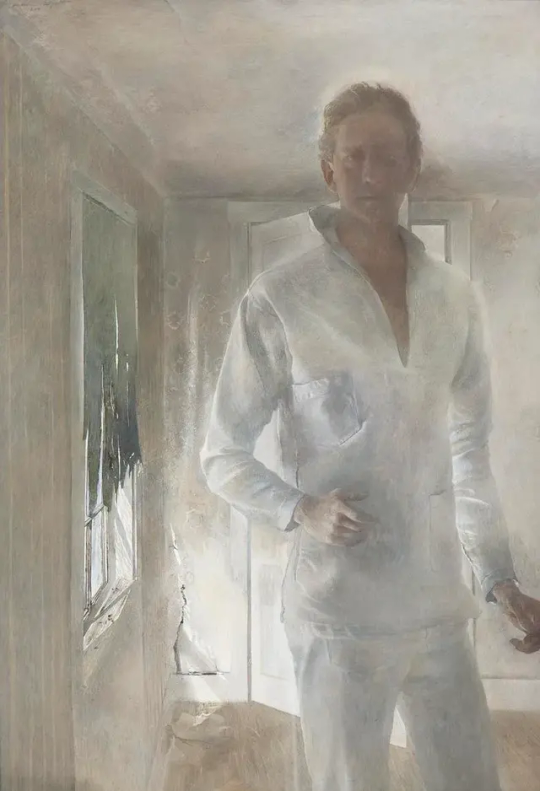
Andrew Wyeth (American, 1917-2009) • The Revenant (Self-Portrait) • 1949 • Egg tempera on masonite • New Britain Museum of American Art, New Haven, Connecticut, U.S.
"Let’s be sensible about this. I put a lot of things into my work which are very personal to me. So how can the public feel these things? I think most people get to my work through the back door. They’re attracted by the realism and they sense the emotion and the abstraction — and eventually, I hope, they get their own powerful emotion.” – Andrew Wyeth
#art#art history#self portrait#painting#andrew wyeth#american artist#regionalism#contemporary realism#egg tempera on masonite#artist quote#the canvas mirror art blog#20th century american art#artist as subject#art blogs on tumblr
8 notes
·
View notes
Text
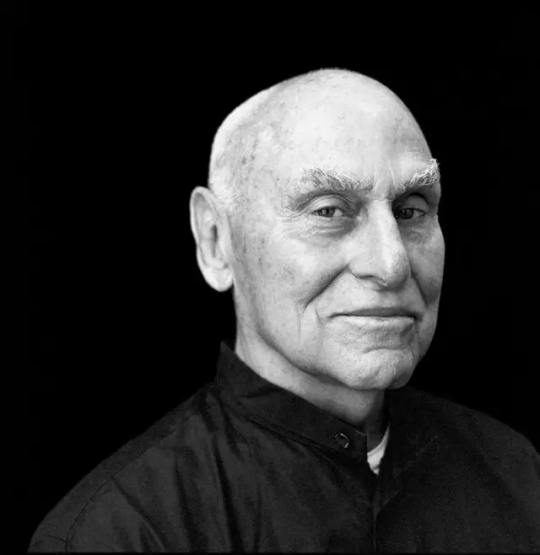
Richard Serra, who has died aged 85, was a remarkable cultural figure – a sculptor who belonged to the generation of American minimalists, was associated with process art and made experimental films, yet evoked something of an earlier, more heroic age. The critic Robert Hughes described him as “the last abstract expressionist”.
Although this statement stretches the point, Serra’s interest in the processes of sculpture led him to some extravagant gestural acts that belie the severity of his grand public commissions. Weight and Measure, made in the early 1990s for what is now Tate Britain, exemplified his austere side, with its massive steel forms designed to counter the building’s overbearing classicism. However, some of his other works, such as the twisting, “torqued” structures installed at the Guggenheim in Bilbao in 2005, are positively baroque.
Curled around an existing sculpture, Snake, that was commissioned for the museum’s opening in 1997, these steel works, dominated by ellipses and spirals, articulate spaces in which the gallery visitor can wander. They are monumental enough to take on Frank Gehry’s grandiose architecture, but, with their patinated surfaces and curved forms, also have an intimate, sensual quality. Above all, Serra’s sculptures create a remarkable interaction with the public and a strong experience of gradual discovery – hence the installation’s title, The Matter of Time.
His works have proved popular with curators, but are not confined to museums. They have appeared in settings as diverse as the Tuileries garden in Paris, the Federal Plaza in New York, and the Qatari desert, attracting responses from intense admiration to a public inquiry. One of his sculptures, Fulcrum, was put up in 1987 at Broadgate outside Liverpool Street station in London. It manages to combine monumentality with fragility, made of weathered steel plates that appear to support each other precariously.
He was born in San Francisco into a family that provided a foundation for his later career as a sculptor in metal. His father, Tony, who was from Majorca, was a pipe-fitter in a naval shipyard. His mother, Gladys (nee Fineberg), who was the daughter of Jewish immigrants from Odessa, used to introduce her son as “Richard, the artist” and was, later, touchingly enthusiastic when he began to make his way in New York. Serra himself laboured in steel mills during his time as a student and subsequently, in 1979, made a compelling film, Steelmill/Stahlwerk, about German workers in the industry.
Serra began his studies in 1957 at the University of California in Berkeley, graduating from the institution’s Santa Barbara campus with a degree in English literature. He followed this in 1961 with a three-year course in painting at Yale University, New Haven – a period in which he also worked as a teaching assistant and as a proof-reader for Joseph Albers’s book Interaction of Color (1963). At Yale he encountered such luminaries as Philip Guston, Robert Rauschenberg, Ad Reinhardt and Frank Stella, before winning a fellowship that took him to Europe in 1964.
In Paris, Serra was profoundly impressed by the sculpture of Constantin Brâncuși, but in Florence the following year he continued to paint, producing coloured grids in timed conditions controlled by a stopwatch. It was only with his first exhibition, at the Galleria La Salita in Rome in 1966, that he made a definitive move away from painting, filling cages with live and stuffed animals.
After moving to New York in the same year, Serra initially survived by setting himself up as a furniture remover, together with his friends, the composers Philip Glass and Steve Reich. Serra’s artistic development at this time was rapid, moving from experiments with rubber, fibreglass and neon tubing to the metal sculpture for which he became renowned. He soon began his long-term association with the Leo Castelli Gallery in New York, in whose Warehouse annex he was photographed in 1969 throwing molten lead at the wall with a ladle.
In the same year Serra refined this procedure by splashing the metal against a small steel plate stuck into the corner of Jasper Johns’s studio. The “castings” produced when the lead cooled down were rough, expressive forms, but this project also inspired Serra to create more impersonal pieces, in which metal sheets were wedged into the angles of rooms, leaned against each other or pinned to the wall by lead pipes. His emphasis on objective phenomena – mass, gravity and other physical forces – can also be seen in his remarkable experimental films.
In Hand Catching Lead (1968), the hand is in fact the artist’s but it is shown disembodied, trying to grasp rather than cast pieces of falling lead, which it drops or misses altogether. The repetition of this fundamentally pointless act gives the film a serial quality, akin to the celluloid process itself.
Serra’s engagement with the cutting edge also led him to work with the land artists Robert Smithson and Nancy Holt. In 1970 he assisted them with Spiral Jetty at the Great Salt Lake in Utah and, after Smithson’s death in 1973, Serra helped to complete Amarillo Ramp in an artificial lake in Texas. His own site-specific sculptures included Spin Out: For Bob Smithson (1972-73), in the park-like surroundings of the Kröller-Müller Museum at Otterlo in the Netherlands. Here the three converging steel plates interacted with each other and their environment, exemplifying Serra’s aim that “the entire space becomes a manifestation of sculpture”.
The 1970s was a difficult decade in Serra’s life. In 1971 a worker was killed in an accident during the installation of one of Serra’s sculptures outside the Walker Art Center in Minneapolis. His five-year marriage to the artist Nancy Graves ended in 1970, and his mother’s suicide in 1977 was followed two years later by the death of his father. However, in that decade he also met his future wife, the art historian Clara Weyergraf, with whom he collaborated on Steelmill/Stahlwerk. Clara was also to play a vital role in shaping his sculpture, as well as giving her name to Clara-Clara, a powerful, curvilinear work that was installed in the Tuileries garden in 1983. The history of this piece exemplifies Serra’s problems in making site-specific art, since it was originally intended to feature in a show at the Pompidou Centre, but at a late stage was deemed to be too heavy.
Clara-Clara’s travails were minor in comparison to the controversies surrounding Tilted Arc, a sculpture 36 metres long, set up at the Federal Plaza in Manhattan in 1981. Condemned for being intrusive, a magnet for graffiti artists and even a security risk, it was eventually removed in 1989, four years after a public hearing in which a majority of witnesses had advocated its preservation.
Despite this setback, Serra’s career continued to flourish. He had two retrospectives, in 1986 and 2007, at the Museum of Modern Art in New York, which also devoted a permanent room to his monumental work Equal (2015), as well as major exhibitions at home and abroad. He showed frequently with his gallery, Gagosian, in London, New York and Paris, most recently in 2021.
In 2001 he received a Golden Lion for lifetime achievement at the Venice Biennale, in 2015 the Légion d’honneur in France and, three years later, the J Paul Getty Medal.
During his latter years, Serra became heavily involved with public projects in Qatar, above all the four steel plates, rising to over 14 metres and spanning more than a kilometre, erected west of Doha in 2014. Known as East-West/West-East, the work engages spectacularly with its surroundings, the gypsum plateaux of the Brouq nature reserve in the Dukhan desert. Serra himself described it as “the most fulfilling thing I’ve ever done”.
He is survived by Clara.
🔔 Richard Serra, artist, born 2 November 1938; died 26 March 2024
Daily inspiration. Discover more photos at Just for Books…?
13 notes
·
View notes
Text
Stats 2: Electric Boogaloo
Our 256 works are comprised of.... 132 paintings, 36 drawings / digital artworks / comics, 26 installation pieces, 20 sculptures, 11 buildings, 11 public artworks, 10 photographs, 4 prints, 3 cave arts, 2 textile arts, and 1 thing I classified as a collage instead of anything else!
More stats below!
Most popular city: New York, with 13 pieces, followed by Paris with 8, and Chicago is third with 7! Washington DC has 6, Florence, Madrid, and London all have 5, Philadelphia has 4, Dublin, Edinburgh, Mexico City each have three, and all the following cities have two: Boston, Cairo, Calgary, Cordoba, Helsinki, Houston, Jerusalem, Los Angeles, Munich, Ottawa, Prague, Vienna, Warsaw
Most popular museum: somehow the Art Institute of Chicago has the most with 6 pieces! Followed by the Museum of Modern Art with 5 pieces! The Museo del Prado has 4, the Philadelphia Museum of Art has 3, and the Ateneum, Louvre, Metropolitan Museum of Art, Museo Dolores Olmedo, National Gallery of Canada, Solomon R. Guggenheim Museum, Tate Britain, Tretyakov Gallery, and the Uffizi Gallery each have 2! In addition, the single works are spread out amongst 16 city level galleries (ie the Phoenix Art Museum), 5 state/provincial (ie Queensland Art Gallery), 25 national (ie National Gallery Prague), 8 museums named after benefactors (ie the Hirshhorn Museum), 7 museums dedicated to a specific artist (ie the Van Gogh Museum) and numerous other institutions! Churches, palaces, increasingly specific museums, museums that are named after their location rather than their governmental level... and of course a whole lot of private collections and pieces we were unable to find the location of!
Countries! 50 pieces are in the US! 13 in France! 12 in Spain! 7 in England, 6 in Canada and Italy, 5 in Russia, 4 in Ireland, Mexico, and Australia, 3 each in Germany, Austria, and Scotland, and 2 each in China, the Netherlands, Israel, Finland, Wales, Poland, Japan, Egypt, and India, and 1 each in Portugal, Ecuador, Thailand, Singapore, Belgium, Argentina, Sweden, the Czech Republic, Norway, Bangladesh, Saudi Arabia, and the Vatican!
Demographics! I revoked John Singer Sargents American status for these because he was born in Europe, and spent most of his life travelling around Europe. I tried my best to track down the correct numbers but honestly some of these are likely to be slightly off. I went with easily publicly available information like Wikipedia and where that failed the author's website. I also tracked people's birth countries in addition to where they lived / worked for most of their lives. Anyway! We have 74 pieces by American artists! 27 French, 22 English, 14 Russian, 13 Spanish, 11 Canadian, 9 Italian, 8 Chinese, 8 German, 6 Irish, 6 Polish, 6 Mexican, 5 Greek (four of those are Ancient Greece), 5 Ukrainian, 5 Japanese, 4 Australian, 4 Belgian, 4 Indian, 3 Serbian, 3 Armenian, 3 Dutch, 3 Austria, 3 Latvian, 3 Swedish, 2 each from Finland, Scotland, Malaysia, Cuba, the Czech Republic, and Norway, and one each from Israel (specifically), Portugal, Ecuador, Thailand, Switzerland, Denmark, Iran, Colombia, Chile, Estonia, and Egypt (albeit Ancient Egypt)
Including the one Israeli artist, we have 7 Jewish artists represented, as well as 4 Black, 6 Indigenous (one is half Kichwa, one is Sami, one is Haida, one is Ojibwe, and two are Australian Aboriginals. One of those is Kokatha and Nukunu, and the other one was a group project with eight artists who did the majority of the work, and 6 of those are from Erub Island but the articles did not specify further except that at least one of the eight is non-Indigenous), 1 Chicana, and 1 Asian-American (which I am specifying because I felt very stupid adding tallies to an Asian column when I already said there are 8 Chinese artists and 5 Japanese and 2 Malaysians and....). We also do have 16 artists that publicly identify as queer in some fashion! I have listed 9 works by gay men, 2 works by lesbians, and 5 that have chosen to use "queer" instead of other labels.
And on that note.... we have 155 works by men, 51 by women, and 2 by nonbinary artists!
Most represented artists! Frida Kahlo and René Magritte tied with four works each! Félix González-Torres, Francisco Goya, John Singer Sargent each have three! And the artists that have 2 artworks each are... Claude Monet, Dragan Bibin, Edmund Blair Leighton, Francisco de Zurbarán, Gustav Klimt, Holly Warburton, Hugo Simberg, Ilya Repin, Ivan Aivazovsky, Jacques-Louis David, Jenny Holzer, Louis Wain, Pablo Picasso, Sun Yuan & Peng Yu, Victo Ngai, Vincent van Gogh, Pierre-Auguste Renoir, and Leonardo da Vinci (although the second is debated attribution)! That means that 205 of the works are not by any of the above! Some have unknown artists (we've got THREE CAVE ARTS) but most are just... really varied!
And lastly, years painted (as sorted by year finished and not year started). Who else loves when something is listed as "13th century"?? Not me, that's who. This is going to be a lot of numbers, and there's no real way to make it more readable. so..... feel free to skip!
The oldest two submissions are from circa 40,000 years before present, and 30 to 32 thousand years before present! Six more artworks came to exist before 0 (CE or AD depending on who you're talking to), and 7 before 1000! 2 from the 1200s, 6 from the 1400s, 8 from the 1500s, 3 from the 1600s, and 5 from the 1700s! Several of those already listed were started in a previous ....age category (for instance, one has no specified date other than 7300 BC to 700 AD) but once we hit 1600, everything is usually finished in a relatively short timespan. 6 are from 1800-1850, 9 from 1850-1880, and the 1880s are extremely busy. 1 from 1881, 3 from 1882, 1 from 1883-1885, 5 from 1886, and two each from the next four years (1887-1890)! 6 from 1891-1895, and 5 from 1896-1900!
We've got 3 from 1901 or 1902, 4 from 1903, two each from 1906 and 1907, and one each from 1908 and 1909! 3 from 1910-1915, 3 from 1917, 2 from 1918 and one from 1919! 6 are from the Roaring Twenties, three of them specifically from 1928! 4 from 1931-1935, and only 3 from the latter half of the 30s! There's 3 from WWII, and 4 from 1946-1949, 5 from 1951-1954 but only 3 from '55-'59. 5 from the sixties, 7 spread out through the 70s, and 10 from the 80s, two each from 81, 82 and 84. The 90s have a lot of duplicate and triplicate years, totaling 20 overall! 11 are from 90-95, the other 9 are 96-99. 7 from 2001-2005, and 8 from 2006-2009. 9 from 2010-2014, 3 from 2015, 6 from 2016, 5 from 2017, 1 from 2018, 3 from 2019, 5 from 2020, 1 from 2021, 4 from 2022, 11 from 2023, and 3 ongoing projects! Whew! If anyone wants it listed By Year instead of in groups like this, that'll be most readable in like... list form and that's way too long for a stats post.
Congrats on making it to the end! If you got this far, uh, let me know if you want to see the spreadsheet after the tournament, I guess. I'm very proud of it.
50 notes
·
View notes
Photo

ab. 1740 John Smibert - Benjamin Colman
(New Britain Museum of American Art)
48 notes
·
View notes
Text
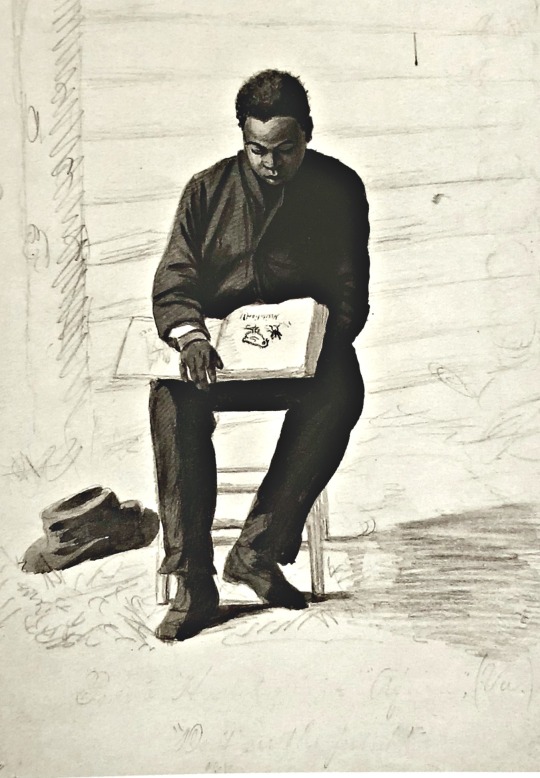
Boy and Book, Charles Ethan Porter (1847-1923)
#art#art history#Charles Ethan Porter#portrait#portrait painting#genre painting#African-American#poc in art#African-American artists#American art#African-American art#19th century art#watercolor#watercolor on paper#New Britain Museum of American Art
94 notes
·
View notes
Text
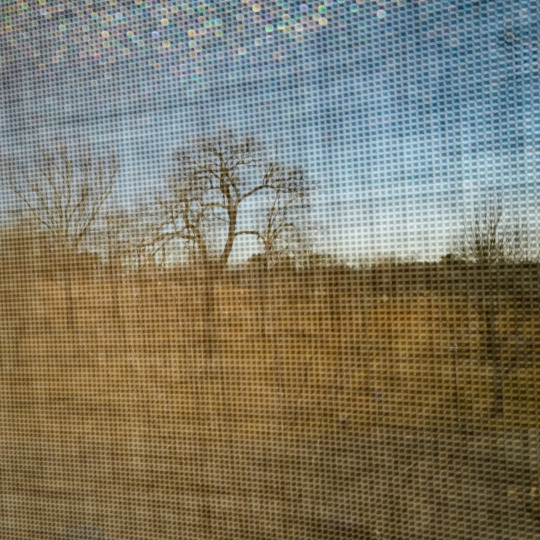
View from a Window, New Britain Museum of American Art, 2 18 23, Photo by Joe Bruha, Copyright 2023
57 notes
·
View notes
Photo
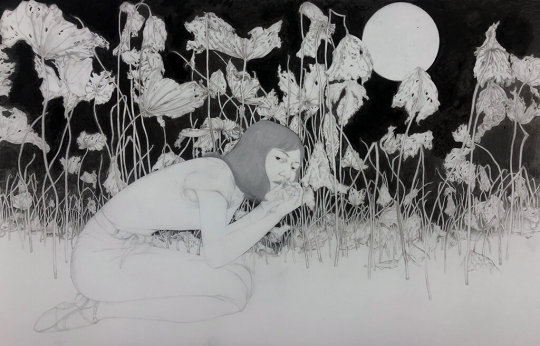


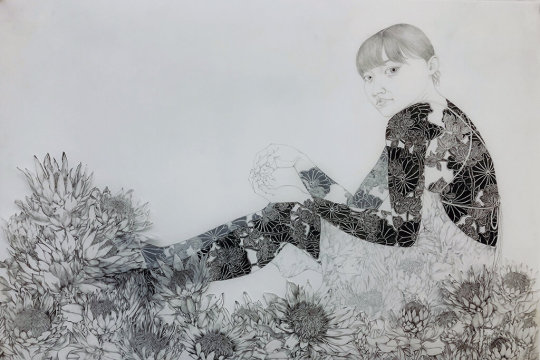

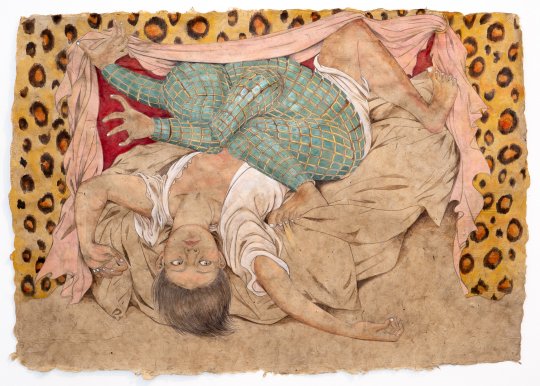


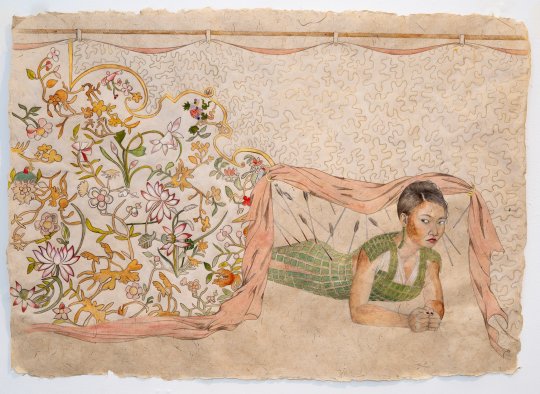
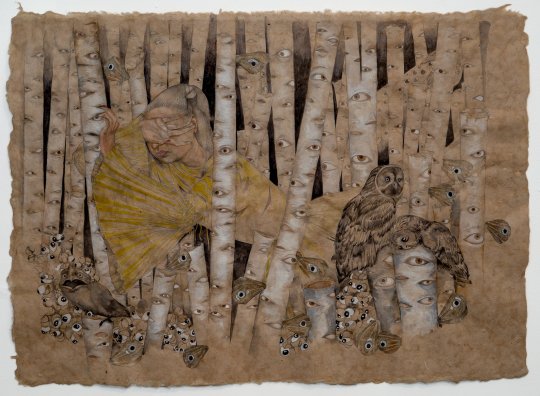
Fay Ku is a Taiwan-born, New York City-based artist whose work connects with past and present cultural histories. She is the recipient of a 2007 Louis Comfort Tiffany Grant and 2009 New York Foundation for the Arts fellowship grant.
Her work is in the collection of Academy Art Museum (Easton, MD), Asian American Art Centre (New York), Honolulu Museum of Art (Honolulu, HI), Marjorie Barrick Museum of Art (Las Vegas, NV), The New Britain Museum of American Art (New Britain, CT) and The Wadsworth Atheneum, Hartford, CT).
https://www.fayku.com/about-the-artist
39 notes
·
View notes
Text
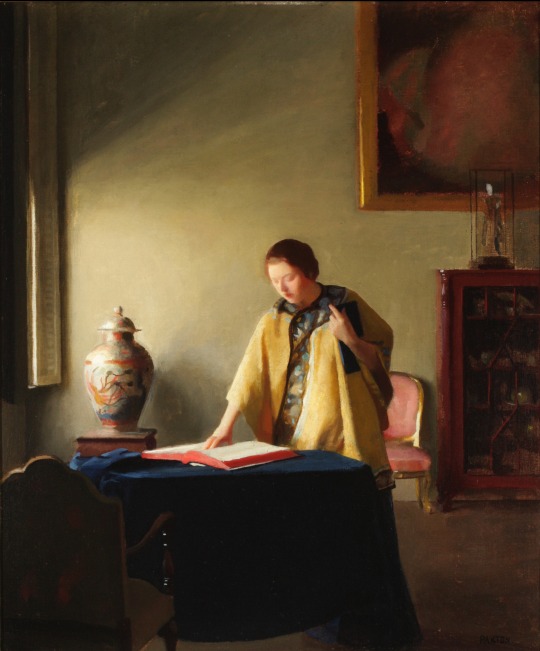
William McGregor Paxton (American, 1869–1941) • Woman with a Book • 1910 • New Britain Museum of American Art, New Britain, Connecticut
#art#painting#fine art#art history#oil painting#william mcgregor paxton#american artist#paintings of interiors#paintings of domestic interiors#interior with figure#women in artworks#artwork#early 20th century american art#art blogs on tumblr#art lovers on tumblr#the painted room art blog#american impressionism
50 notes
·
View notes
Photo

Dim Stars: Waiting by Scott Bakal
This is a painting titled Dim Stars: Waiting. This piece is part of a collection of 20 pieces in the recent ‘Alien Transport’ series and exhibition.
In this piece, our alien friend is waiting for his transport off this rock called ‘Earth’. A handful of pieces will be available here and coming soon at my shop.
The person who purchases this piece will get the newly released book-a-zine called Dim Stars: The Object free with the artwork! Showing love!
View The Object trailer here: Dim Stars Secure Video Network Buy The Object zine here: Dim Stars: The Object
Art: 5″x7″. This work is mixed media on wood panel and wired for hanging. No frame needed to hang but I recommend a white floater frame if desired.
History: I started creating this character and the Dim Stars world about 15 years ago they have been exhibited in galleries all around the U.S.. Various pieces have won awards from most of the major illustration competitions. The nine-piece series, ‘Dim Stars: Pollution’ was acquired by the New Britain Museum of American Art for their permanent collection.
VIEW DETAILS brought to you by Every Day Original
1 note
·
View note
Text
[Disclaimer: this is a bunch of art history facts and tidbits masquerading as Midnight Pals fanfiction. I am so bored. Midnight Pals is by @bitterkarella , it's very good and you should read/listen. hello good day and I am so sorry]
Nièpce: Uhm. Bonjour. I would like to introduce you you all this new thing I made called a heliograph?
Caravaggio: who the fuck invited the chemist.
Hopper (looking at the heliograph): I like it. It reflects the tristesse and pointlessness of the world.
Genteleschi (talking over Hopper,to Caravaggio): who the fuck invited you.
Stieglitz: I like it and I'll argue your case but you must NEVER bring up the word "Kodak"
(A cartoonish brawl breaks out in the background)
Nièpce: What's a Kodak?
(scene)
Turner: I would like to introduce to you my painting Snow Storm – Steam-Boat off a Harbour's Mouth Making Signals in Shallow Water, and going by the Lead. The Author was in this Storm on the Night the "Ariel" left Harwich
(Everybody looks at the painting)
Hopper: but what's the painting called.
Turner (sarcastically): it was called many things by the critics.
Turner:...
Turner: you can call it snowstorm.
(scene)
Duchamp: I would like to introduce you to my painting "Nude descending a staircase"....
Gauguin (startling out of deep sleep): Tits??
Gauguin (squinting at the painting): .....
Gauguin: go fuck yourself Marcel.
Genteleschi (nursing a stab wound from the earlier fight) That's what you should do, then you'd stop making women sick.
(murmurs of agreement)
(scene)
Dramatis personae:
Nicephore Nièpce, an early pioneer of photography (his heliograph is today regarded the first photograph ever)
Alfred Stieglitz: American photographer, part of the pictorialist movement that heavily pushed the "photography is a form of art too damn it" angle after the Eastman Kodak company released the first commercially viable photo camera and photography went from a totally obscure nerd hobby that only a few people could even pull off to something that everyone could easily do.
Caravaggio: Renaissance painter. Most of the information that exists on him are court records of his stab-happy crime spree and that he once sued a guy for painting in his style which is a 21st century dick move. He got thrown out of two different cities for the crime of stabbing a guy fatally in the balls. This is really all you need to know about Caravaggio.
Artemisia Genteleschi, renaissance WOMAN and absolute badass. There were woman artists back then but not many and she could already paint at a professional level at age fifteen or sixteen! She got admitted to the academy of arts!! She sold her paintings internationally! She was really really good.
Edward Hopper, member of the school of so called "American realism" and probably clinically depressed according to my classmate who did the presentation on him. If it looks sorta realistic and exudes a sense of isolation and loneliness even if there is multiple people in the painting, it's probably one of his. (He was part of last year's art history final and I thank whoever looks kindly on highschoolers that I was able to retain some information from that presentation as well as.my classmate for picking him off the list)
William James Mallord Turner
British landscape painter. Regarded as Britain's Favorite painter (these days)
He was supposed to be the subject of my presentation but I begged my teacher to let me do Marcel Duchamp instead. I have since seen the errors of my way.(more on that later) Snowstorm is currently on loan to the Lenbachhaus, an art museum in Munich Germany, and I went to the exhibition and stood right in front of it. It's really something.
The things the critics said about Snowstorm were "soapsuds and whitewash" and "all of the contents of his (Turner's) pantry"
Now Turner had a certain "fuck off" attitude to artistic people pleasing but according to a contemporary source called John Ruskin (I think) he read that scathing review and went "soapsuds and whitewash! Soapsuds and whitewash! I wonder what they think the sea's like!? I wish they'd been in it!" which I think is hilarious.
And finally Marcel Duchamp.
What the fuck do I say about him? I have done the presentation. I got a 2 (that's pretty good!) And I still struggle to understand what the guy was even doing. His most well known contribution to art is an upside down toilet. Or well...a photo of that that was photographed by Stieglitz.
He was french I guess that's what I can say about him. I was like "oh he did Object art. I do object art. I'll like what he made" but it turns out that "object art" is a really vague catch-all term. :) who could've guessed. I like Tom Every more (look up the Evertron. It's the world's largest scrap metal sculpture and it is freaking phenomenal. THAT'S what I wanna do. Not Marcel Duchamp. I wanna make whimsical shit like he did or weird shit like Luise Bourgeois did. They're my art heroes. Not Marcel Duchamp. just wanted to make Gauguin look bad cause he was a thoroughly unpleasant person who I wouldn't touch with a six meter pole )
4 notes
·
View notes